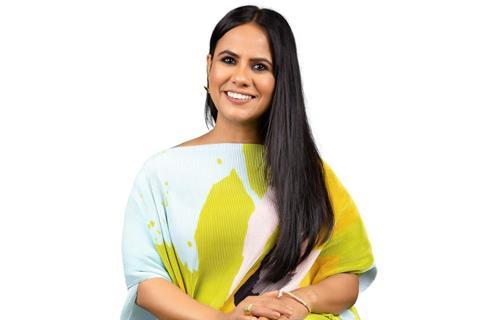
The state of female representation in the Indian film and TV sectors remains extremely low and should act as a “wake-up call” for the industry, according to a major report.
Women hold just 10% of head of department (HOD) positions across key divisions (production design, writing, editing, direction and cinematography) according to the study, led by Ormax Media and Film Companion, and supported by Amazon Prime Video.
Out of the 56 theatrical films analysed across eight languages, not one was directed or edited by a woman. In media and entertainment corporate houses, which remain at the centre of decision-making, only 10% of senior leadership roles were held by women, creating a cascading effect on inclusivity through the production and execution chain.
The figures were revealed in the O Womaniya! 2022 report, which aims to highlights on-screen and off-screen representation of women by examining 150 theatrical films, streaming films and series released in 2021 across 8 Indian languages.
Further key findings highlighted low representation on-screen with only 55% of the films and series passing the Bechdel Test. In promotional trailers, women had only 25% talk time with 48 titles even allocating 10 seconds or less to female characters.
The percentage of female HODs doubled when a woman greenlit a series or a film, according to the report. Similarly, a higher percentage of films passed the Bechdel Test (68%) and women had higher trailer talk time (35%) if the title was commissioned by a woman.
Streaming films and series performed better than theatrical features across all parameters indicating the change the sector is ushering in representation on and off-screen. For instance, representation of female HODs in streaming films and series was five times higher than theatrical films.
Similarly, 64% of streaming series and 55% of streaming films passed the Bechdel Test, as opposed to more than half of theatrical films failing it. Likewise, streaming films and series provided more talk time to female characters in trailers.
Ormax Media founder and CEO Shailesh Kapoor said it was “no surprise” that female representation in mainstream entertainment is low but that the 10% representation figures should provide “a wake-up call”.
“While streaming titles, especially series, are more women-inclusive in on and off-screen representation, theatrical films continue to perform very poorly, and in fact, have shown no positive growth at all since the previous report, which covered content released in 2019 and 2020,” said Kapoor. “We hope that this report serves as a starting point for the industry to come together and discuss ways to address the evident imbalance.”
Aparna Purohit, head of India Originals at Prime Video, said: “While there have been improvements in female representation in Indian entertainment, there hasn’t been any data-backed report in India that can hold a mirror up to the current reality.
“The report serves as a good starting point to initiate discussions on the need to involve more women, particularly in decision-making roles, as that has a ripple effect on inclusivity in the entire ecosystem. Change has to be persistent and intentional, and we need to take constant steps to improve these numbers year after year.”
For the first time, the report was compiled in collaboration with multiple entities from across the media and entertainment industry including industry bodies the Producers Guild of India and Active Telugu Film Producers Guild; streaming services hoichoi, SonyLIV, Voot and ZEE5; and leading film studios Clean Slate Filmz, Dharma Productions, Emmay Entertainment, Excel Entertainment, Purple Pebble Pictures, RSVP and Sikhya Entertainment.
























No comments yet